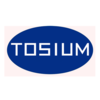擠壓態(tài)AZ31鎂合金溫?zé)崂煨阅艿母飨虍愋?/h1>
擠壓態(tài)AZ31鎂合金溫?zé)崂煨阅艿母飨虍愋訟nisotropy of warm-temperature tensile properties of extruded AZ31 magnesium alloy 采用單向拉伸實驗研究溫?zé)釛l件下擠壓態(tài)AZ31鎂合金板材5個不同方向的力學(xué)性能、顯微組織、斷口形貌。結(jié)果表明:擠壓態(tài)鎂合金力學(xué)性能具有明顯的各向異性,170 ℃時,各向異性最明顯,隨著拉伸方向與擠壓方向所呈角度的增大,抗拉強度從217 MPa增大到271 MPa,屈服強度卻從174 MPa減小到71 MPa。鎂合金在溫?zé)釛l件下變形機制為 拉伸孿生、 壓縮孿生和{0001}基面áa?滑移;沿著不同角度拉伸時,變形機制有所不同。拉伸方向與擠壓方向的角度小于45°時,擠壓態(tài)鎂合金表現(xiàn)為微孔聚集型的韌性斷裂;且隨著角度的增大,表現(xiàn)為韌-脆混合斷裂,其中角度為67.5°時,鎂合金以解理方式斷裂。 The tensile properties, microstructure, appearance of fracture in five different planar directions of extruded AZ31 magnesium alloy sheets at the warm-temperature were investigated by uniaxial compression test. The results indicate that the extruded magnesium alloy sheets show high anisotropy, and the most obvious anisotropic temperature is 170 ℃. With the increase of the angle between tensile direction and extrusion direction, the tensile strength increases from 217 MPa to 271 MPa, and the yield strength decreases from 174 MPa to 71 MPa. There are three deformation mechanisms of magnesium alloys at warm-temperature, which include extension twinning, compression twinning and base slip. The deformation mechanism is different at different stretching angles. When the angle between tensile direction and extrusion direction is less than 45°, the fracture mechanism of magnesium alloy is micropore aggregation fracture. With the increase of angle, it is the mixed fracture of toughness and brittleness, and the cleavage fracture occurs at the angle of 67.5°.
|







